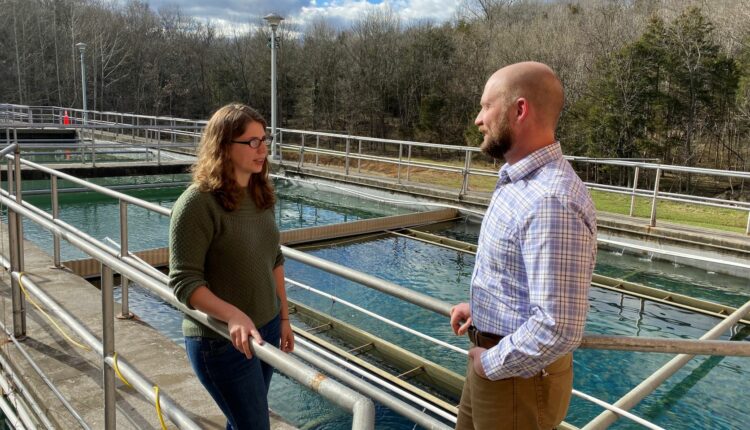PFAS is Just One Piece of the Puzzle for Small Public Water Systems
By Astrika Adams, Assistant Chief Counsel
On March 18, Office of Advocacy staff visited the Maury Service Authority, a public water system serving Lexington, Virginia and Rockbridge County, Virginia. Nestled in the Blue Ridge Mountains, Maury Service Authority is a regional service authority and a political subdivision of the Commonwealth of Virginia formed under the Virginia Water and Waste Authorities Act. Since the 1970s it has provided drinking water to about 9500 customers, including many small businesses.
Maury Service Authority’s Executive Director, Jordan Combs, has volunteered to serve as a Small Entity Representative (SER) for an upcoming Small Business Advocacy Review (SBAR) panel. This panel will be composed of the Chief Counsel for Advocacy, the Administrator of OMB’s Office of Information and Regulatory Affairs, and a representative of EPA’s Office of Water. The panel on which Mr. Combs has volunteered to serve will review materials related to an anticipated rulemaking from EPA. The rulemaking would establish a National Primary Drinking Water Regulation (NPDWR) for certain per- and polyfluoroalkyl substances (PFAS), including perfluorooctanesulfonic acid (PFOS) and perfluorooctanoic acid (PFOA). NPDWRs create maximum contaminant levels that apply to public water systems. The panel will directly engage with Mr. Combs and other small entities that would be subject to the rule to examine the possible economic impacts and regulatory alternatives to minimize impacts to small entities.
According to Combs, the occurrence of PFAS in public drinking water varies based upon whether water comes from a well versus a river and the existence of any upstream industry that utilizes PFAS. Maury Service Authority obtains its water directly from the Maury River, and no known industry utilizes PFAS upstream.
Following the discussion, Combs took Advocacy on a tour of the water treatment plant. He showcased how water from the Maury River is pumped into the water treatment plant and what technology would be needed to treat any PFAS in the water.
Combs also discussed the Unregulated Contaminant Monitoring Rule 5 (UCMR 5) that will require certain public water systems to test for PFOA and PFOS in their drinking water. Any small public water system that is required to comply with UCMR 5 will be provided funds by EPA for testing and analysis, but not until 2023.
Similarly, Congress has appropriated funds meant to address aging water infrastructure through the Infrastructure Investment and Jobs Act of 2021 (IIJA). In anticipation of the near-term availability of these funds, many public water systems, including Maury Service Authority, have already begun planning and designing capital improvement projects.
Our visit showed us how important it is for small public water systems to understand more than just the requirements of one federal rule. They must also understand how to effectively manage and minimize the financial burden to both themselves and the public. Small entities and small businesses must be proactive and creative using limited resources to get the most bang for their buck while complying with rules.


Comments are closed.